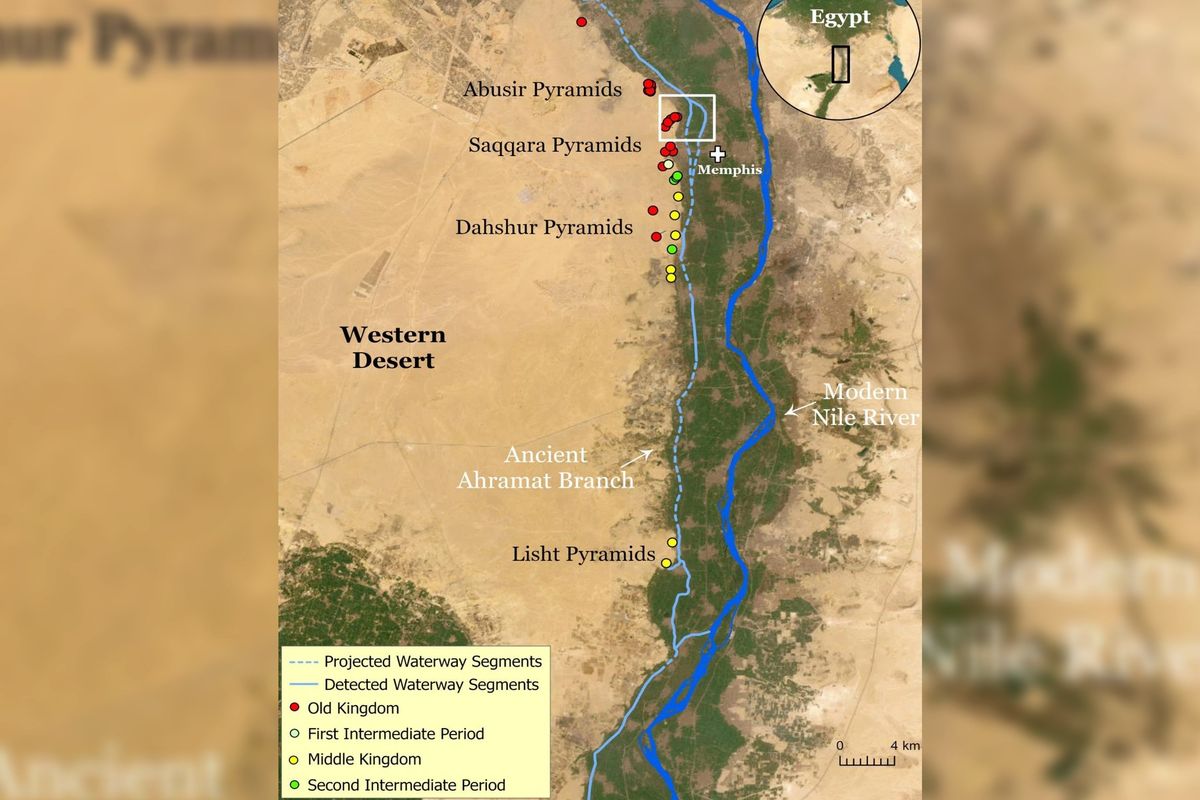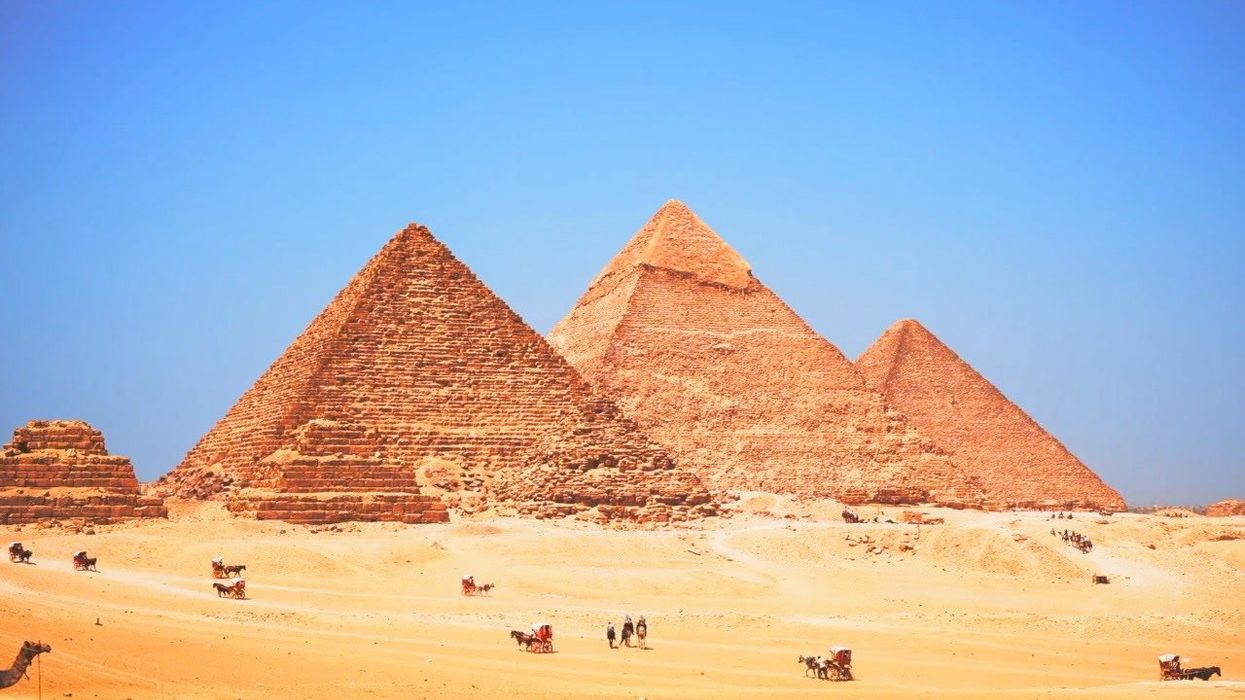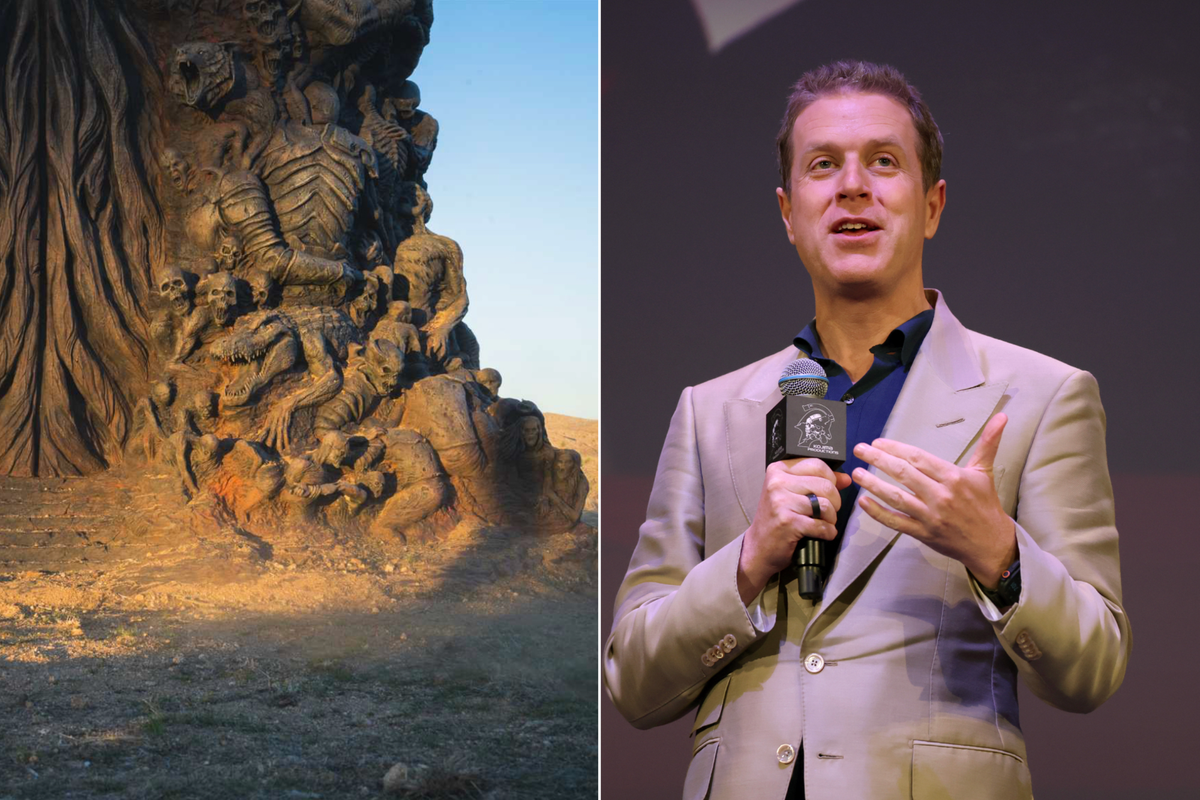Harriet Brewis
Sep 30, 2025
Archeologists Use Satellite Imagery to Finally Solve a Great Mystery Surrounding the …
ZMG - Amaze Lab / VideoElephant
Scientists may have just solved one of the greatest mysteries of the ancient world after making a landmark new discovery in Egypt.
For centuries, experts have puzzled over how the pyramids, including the world-famous complex at Giza, were constructed more than 4,000 years ago.
Now, researchers at the University of North Carolina Wilmington believe they’ve found the missing piece of this age-old puzzle.
The team have uncovered a long-lost branch of the River Nile, which has been hidden under desert and farmland for millennia.
Archaeologists had long suspected that the ancient Egyptians relied on a waterway to transport the massive stone blocks and other materials needed to build the towering pyramids.
However, as one of the lead researchers, Prof Eman Ghoneim, explained, "nobody was certain of the location, the shape, the size or proximity of this mega waterway to the actual pyramids site" – till now.
Prof Ghoneim and her colleagues published their groundbreaking findings in the journal Nature communications earth & environment, last Thursday (16 May).
In the paper, they detailed how they used radar satellite imagery, historical maps, geophysical surveys, and sediment analysis to map the river branch, which they believe was buried by a major drought and sandstorms thousands of years ago.
Speaking to the BBC, one of the study's co-authors, Dr Suzanne Onstine, said: "Locating the actual [river] branch and having the data that shows there was a waterway that could be used for the transportation of heavier blocks, equipment, people, everything, really helps us explain pyramid construction".

The team found that the arm of the river, named the Ahramat branch (after the Arabic word for pyramids), was roughly 64 kilometres (39 miles) long and between 200 and 700 metres (656-2,296 feet) wide.
Most significantly, it bordered 31 pyramids, which were built between 4,700 and 3,700 years ago.
The Ahramat branch's proximity to the pyramid complexes suggests that it was "active and operational during the construction phase of these pyramids", the study’s authors wrote.
In other words, the existence of this extinct waterway finally explains why so many pyramids were built between Giza and Lisht – a region which is now an inhospitable area of the Saharan desert.
Ancient Egyptians could "use the river's energy to carry these heavy blocks, rather than human labour," Dr Onstine explained, adding simply: "It's just a lot less effort".
The discovery not only underlines the importance of the Nile as a lifeline for ancient Egyptians but also highlights how human society has historically been affected by environmental change, the paper’s authors stressed.
Further efforts to find more extinct Nile branches could help prioritise archaeological excavations along their banks and protect Egyptian cultural heritage, they added.
The River Nile was Egypt’s main artery and beating heart 4,000 years ago, and it remains so to this day.
This article was originally published on 20 May 2024
- Creator of world's first AI actress Tilly Norwood breaks silence over agency deal controversy
- 'Black Mirror' future of dating may include a personal AI bot picking your partner for you
Sign up for our free Indy100 weekly newsletter
How to join the indy100's free WhatsApp channel
Have your say in our news democracy. Click the upvote icon at the top of the page to help raise this article through the indy100 rankings
Top 100
The Conversation (0)














